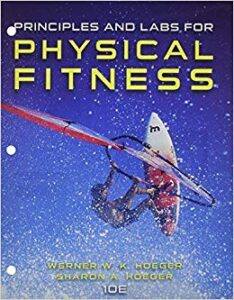Description
Principles and Labs for Physical Fitness 10th Edition by Wener W.K – Test Bank
| True / False |
1. Successful gymnasts have achieved skill-related fitness in all components.
|
2. Power refers to the ability to quickly and efficiently change body position and direction.
|
3. Reaction time is the ability to rapidly propel the body or a part of the body from one point to another.
|
4. People with asthma should exercise only in cool, dry environments.
|
5. If you are a diabetic, you should consult your physician to make sure your diabetes is under control before you start exercising.
|
6. Moderate-intensity exercise is recommended for healthy pregnant individuals.
|
7. The ill effects of smoking can usually be offset by engaging in a sound exercise program.
|
8. Exercise has been shown to aggravate menstrual cramps by hindering blood flow to the uterus.
|
9. Doing too much too quickly is a common cause of exercise-related injuries.
|
10. The main objective of fitness programs for older adults should be to help them improve their functional status and contribute to healthy aging.
|
| Multiple Choice |
11. ____ is important to successfully integrate multiple skills, each with its own degree of difficulty, into one routine.
|
12. The rate of learning in skill-related fitness varies from person to person, mainly because these components seem to be determined to a large extent by:
|
13. Regular participation in a health-related fitness program can heighten performance of ____ components.
|
14. What characteristic is most essential to perform a double back somersault with a full twist?
|
15. To maintain a handstand, _____ is essential.
|
16. What two skills are most likely to improve with a specific strength-training program?
|
17. The principle of _____ of training applies to skill-related components just as it does to health-related fitness components.
|
18. The ability to change body position and direction quickly and efficiently defines what skill?
|
19. The ability to maintain the body in proper equilibrium defines what skill?
|
20. The One-Foot Stand Test is used to measure what skill?
|

Reviews
There are no reviews yet.